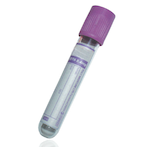
- Home
- Clinical Chemistry Tests
- Insulin
Insulin
Specimen Volume
1 mL bloodTurnaround Time
7 daysSample Stability
RT stability: 24 hrs on cells (unspun/spun), 2-8C stability: 8 days off cellsGeneral Information
The primary clinical use of insulin measurement is in the differential diagnosis of documented spontaneous hypoglycaemia. Further tests, such as those for ketones, proinsulin, growth hormone and the insulin-like growth factors may also be required to complete the diagnostic process.
Causes of hypoglycaemia in adults
Ill or medicated individual
- Drugs
- Insulin or insulin secretagogue
- Alcohol
- Others (Table 3)
- Critical illnesses
- Hepatic, renal, or cardiac failure
- Sepsis (including malaria)
- Inanition
- Hormone deficiency
- Cortisol
- Glucagon and epinephrine (in insulin-deficient diabetes mellitus)
- Nonislet cell tumou
Seemingly well individual
- Endogenous hyperinsulinism
- Insulinoma
- Functional -cell disorders (nesidioblastosis)
- Non-insulinoma pancreatogenous hypoglycemia
- Post gastric bypass hypoglycemia
- Insulin autoimmune hypoglycemia
- Antibody to insulin
- Antibody to insulin receptor
- Insulin secretagogue
- Other
- Accidental, surreptitious, or malicious hypoglycemia
Drugs other than antihyperglycemic agents and alcohol reported to cause hypoglycemia
Moderate quality of evidence (+++):
- Cibenzoline
- Gatifloxacin
- Pentamidine
- Quinine
- Indomethacin
- Glucagon (during endoscopy)
Low quality of evidence (++):
- Chloroquineoxaline sulfonamide
- Artesunate/artemisin/artemether
- IGF-1
- Lithium
- Propoxyphene/dextropropoxyphene
Very low quality of evidence (+):
- Drugs with >25 cases of hypoglycemia identified
- Angiotensin converting enzyme inhibitors
- Angiotensin receptor antagonists
- Adrenergic receptor antagonists
- Levofloxacin
- Mifepristone
- Disopyramide
- Trimethoprim-sulfamethoxazole
- Heparin
- 6-Mercaptopurine
Ref: J Clin Endocrinol Metab, March 2009, 94(3):709–728 jcem.endojournals.org 713
Patient Preparation
Blood should be collected when patient is hypoglycaemic.
Please note: Exogenous Insulin preparations have been shown to cross-react with the Architect insulin assay, but to varying degrees. The human sequence insulin preparations (Actrapid, Humulin S, Insulatard, Humulin I and Humulin M3) demonstrated similar levels of recovery (between 81 and 89%), indicating extensive cross-reactivity in the insulin assay. The insulin analogues (NovoRapid, Apidra, Humalog, Levemir and Lantus) demonstrated variable degrees of recovery with Apidra, showing the lowest recovery at 12 and 14%, while Lantus, over-recovered at 127 and 140%, demonstrating significant cross-reactivity with the assay.
Notes
If glucose is above 3.1 mmol/L, insulin analysis is not usually carried out.
Please send separate EDTA sample for this test.
Haemolysed samples are not suitable for analysis
Reference Range
No associated reference range. Should be interpreted alongside with glucose and c-peptide.
Non- diabetic hypoglycaemia
Evaluation of hypoglycaemia should only be undertaken for patients in whom Whipple’s triad has been documented. Firstly, review the history and physical findings to exclude more common hypoglycaemic aetiologies such as; drugs (insulin, insulin secretagogues, alcohol ingestion), critical illness (sepsis, organ failure), cortisol deficiency and non-islet cell tumours.
Once these have been excluded, in the seemingly well individual, the differentials lie between accidental/ surreptitious hypoglycaemia and endogenous hyperinsulinaemia. Further evaluation is warranted and should involve the following concomitant tests in the event of an ongoing episode of hypoglycaemia; plasma glucose (for confirmation of hypoglycaemia), insulin, C-peptide, beta-hydroxybutyrate as well as the measurement of circulating oral hypoglycaemic agents (if there is a degree of suspicion). When spontaneous hypoglycaemia cannot be observed, a prolonged fast or mixed meal test may recreate the environment in which hypoglycaemia is likely to occur.
Table 1: Taken from the Endocrine Society Guideline in 2009
| Sxs/Signs |
Glucose (mmol/L) |
Insulin (pmol/L) | C-peptide (pmol/L) | BHB (mmol/L) | Circulating OHA | Ab to insulin | Interpretation |
| No | <3.1 | <21 | <200 | >2.7 | No | No | Normal |
| Yes | <3.1 | >>21 | <200 | ≤2.7 | No | Neg (Pos) | Exogenous insulin |
| Yes | <3.1 | ≥21 | ≥200 | ≤2.7 | No | Neg | Insulinoma, NIPHS, PGBH |
| Yes | <3.1 | ≥21 | ≥200 | ≤2.7 | Yes | Neg | Oral hypoglycaemic agent |
| Yes | <3.1 | >>21 | >>200 | ≤2.7 | No | Pos | Insulin autoimmune |
| Yes | <3.1 | <21 | <200 | ≤2.7 | No | Neg | IGF mediated |
| Yes | <3.1 | <21 | <200 | >2.7 | No | Neg | Not insulin (or IGF) mediated |
Specifications
- EQA Status: UK NEQAS Guildford Peptide Hormones
- EQAS Scheme: Yes
Related Tests
C-Peptide Glucose (Plasma)Creation Date
Monday, 08 August 2011Modification Date
Wednesday, 09 August 2023General Information
Location of Laboratories
Copyright UHB Pathology 2018
Protection of Personal Information – Clinical Laboratory Services comply with the Trust Data Protection Policy and have procedures in place to allow the Directorate and it’s employees to comply with the Data Protection Act 1998 and associated best practice and guidance.
University Hospitals Birmingham medical laboratories at Queen Elizabeth Hospital, Heartlands Hospital, Good Hope Hospital and Solihull Hospital are UKAS (United Kingdom Accreditation Service) accredited to the ISO 15189:2012 standard. For a list of accredited tests and other information please visit the UKAS website using the following link: https://www.ukas.com/find-an-organisation/
- Molecular Pathology is a UKAS accredited medical laboratory No. 8759
- Biochemistry is a UKAS accredited medical laboratory No. 8910
- Haematology and Transfusion is a UKAS accredited medical laboratory No. 8784
- Clinical Microbiology is a UKAS accredited medical laboratory No. 8760
- Cellular Pathology is a UKAS accredited medical laboratory No. 10141
- Musculoskeletal laboratory is a UKAS accredited medical laboratory No. 9897
- Heartlands, Good Hope and Solihull Hospital pathology laboratories are a UKAS accredited medical laboratory No.8217.
Tests not appearing on the UKAS Schedule of Accreditation currently remain outside of our scope of accreditation. However, these tests have been validated to the same high standard as accredited tests and are performed by the same trained and competent staff.
For further test information, please visit the test database: http://qehbpathology.uk/test-database
For further information contact Louise Fallon, Quality Manager, 0121 371 5962
 Biochemistry
Biochemistry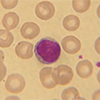 Haematology and Transfusion
Haematology and Transfusion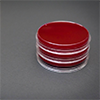 Clinical Microbiology (Including Virology)
Clinical Microbiology (Including Virology)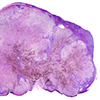 Cellular Pathology
Cellular Pathology General Information
General Information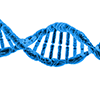 Molecular Pathology
Molecular Pathology